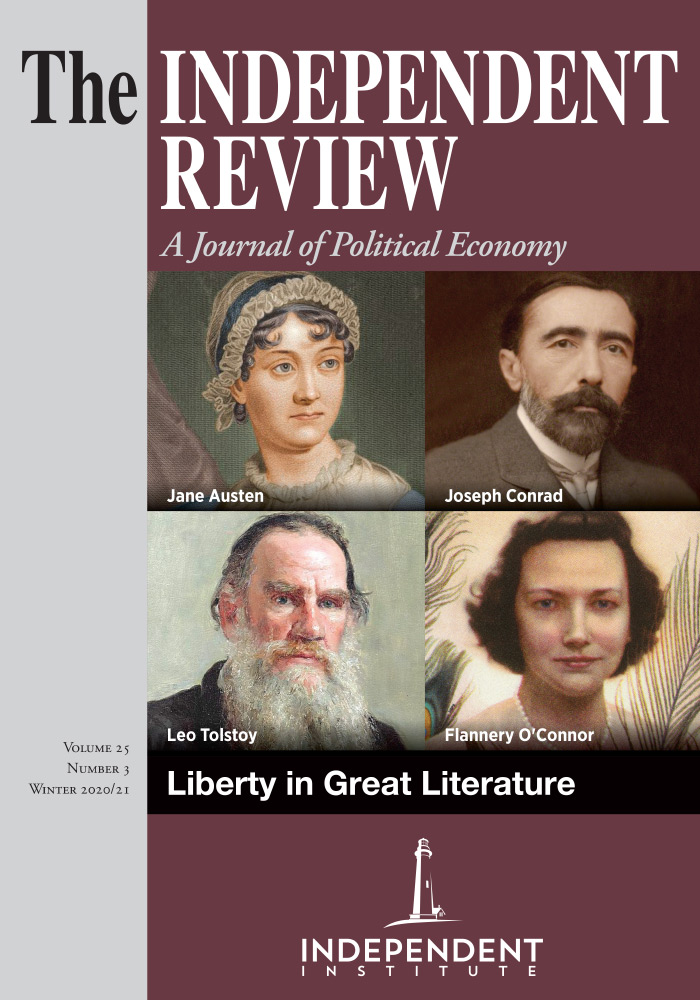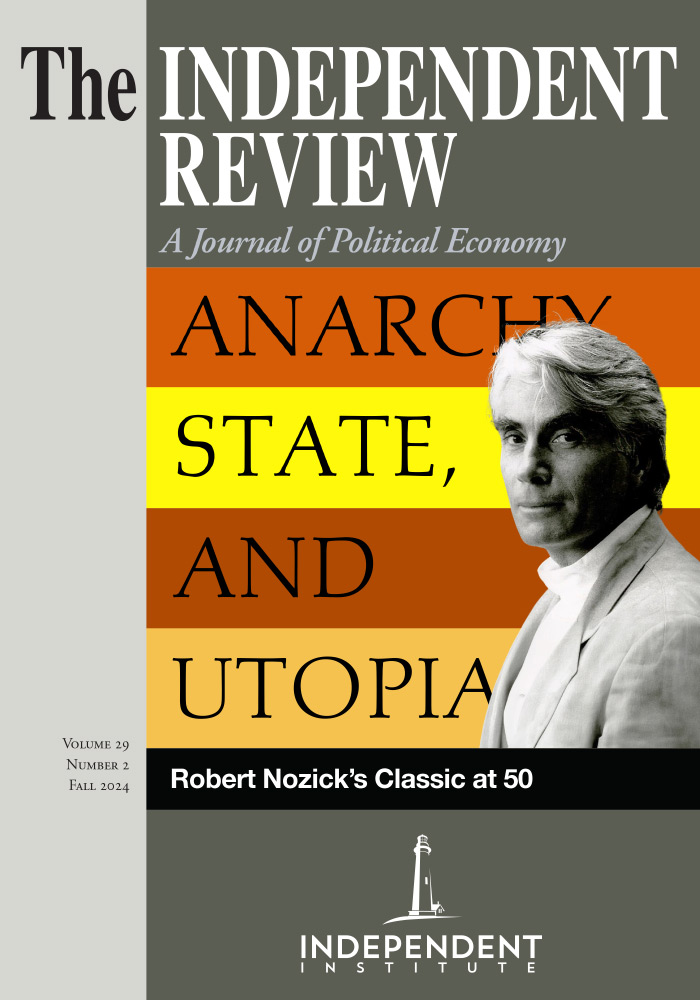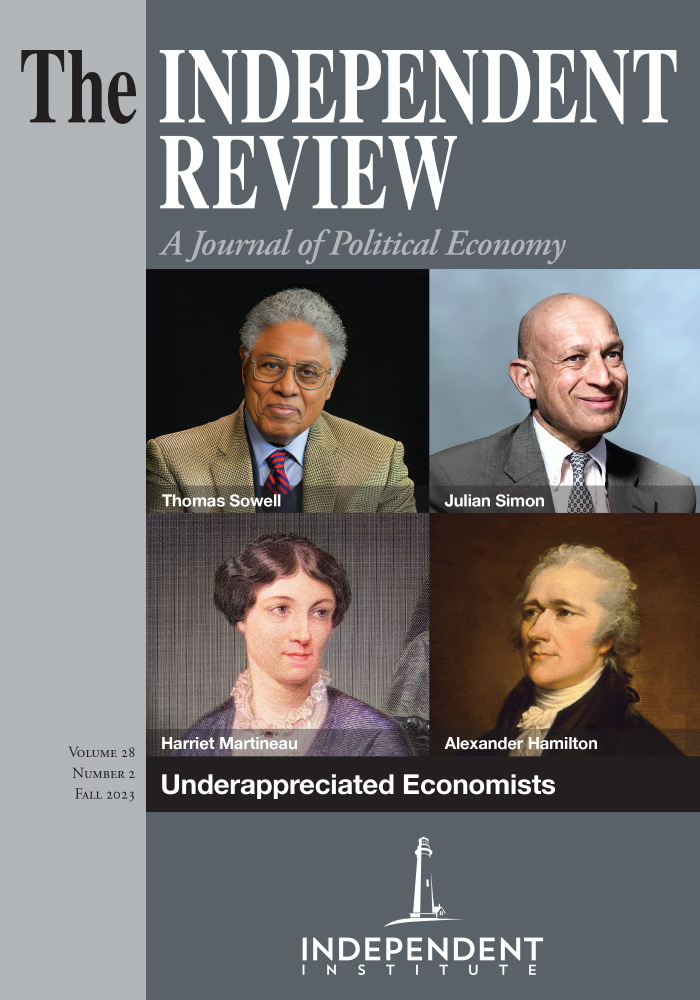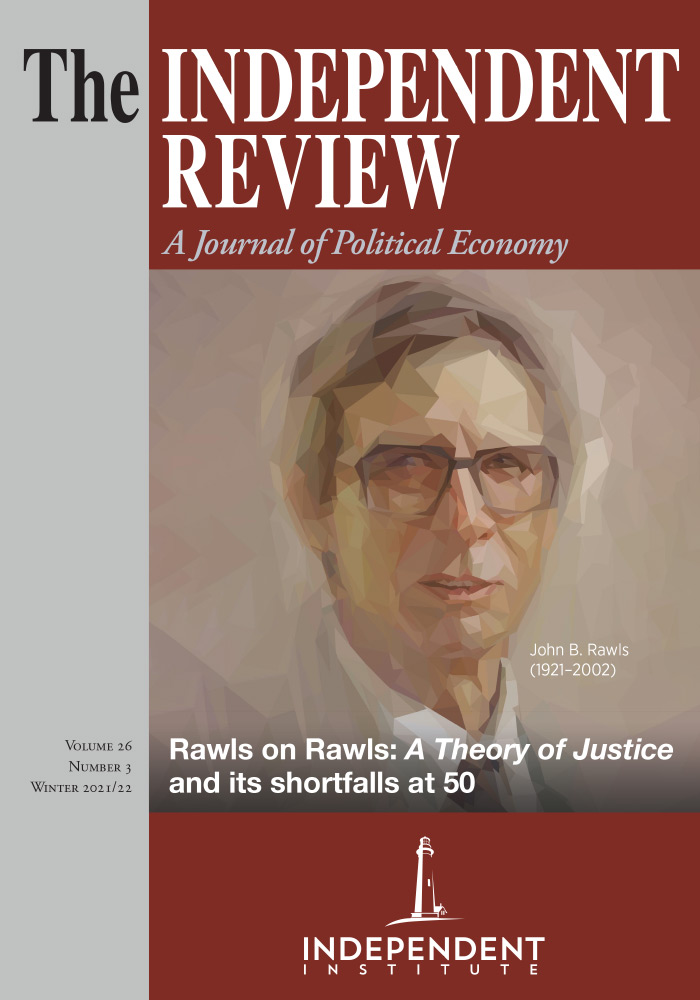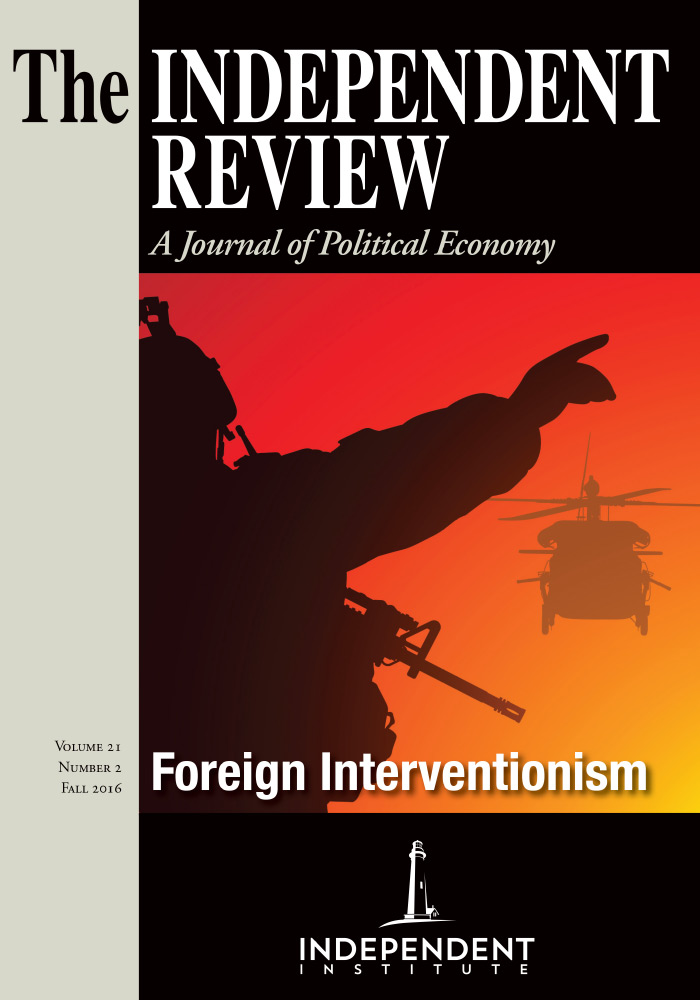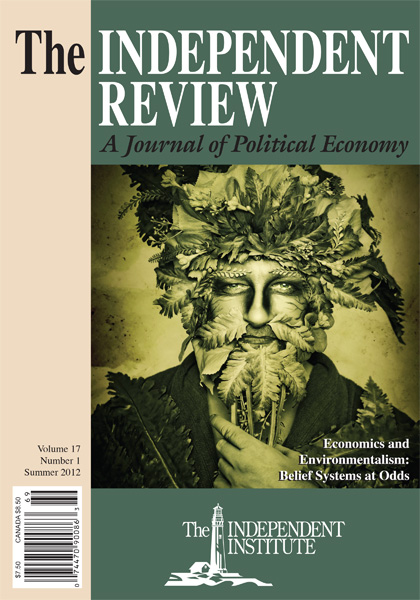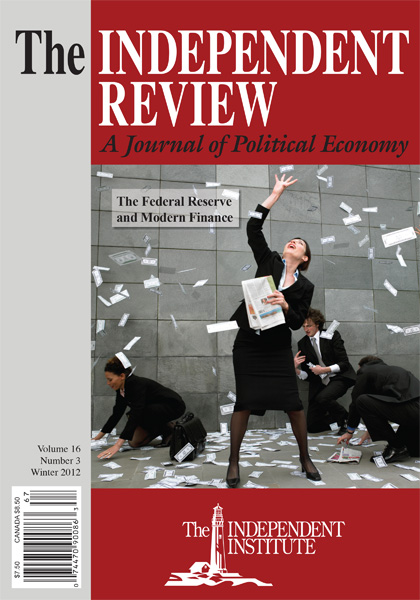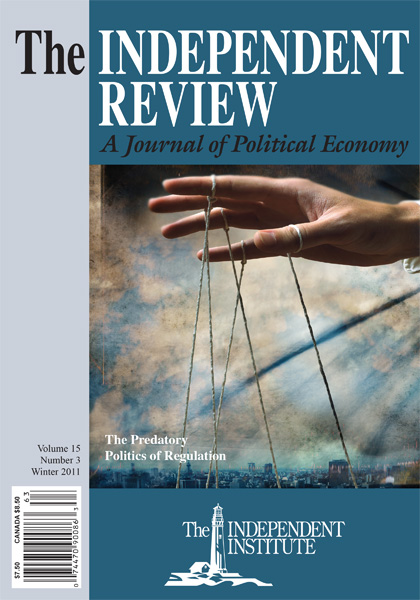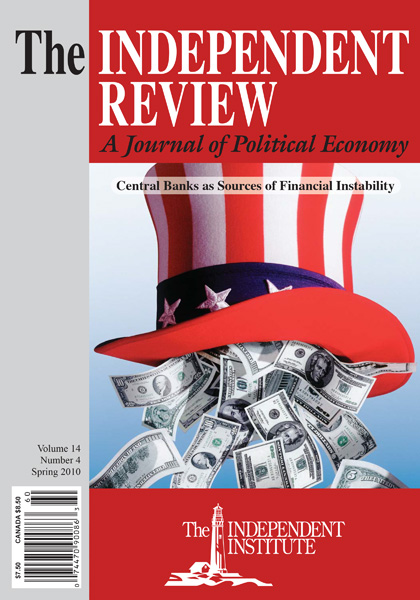A story of two young lovers in seventeenth-century Lombardy whose attempt to get married is hindered by a jealous nobleman, The Betrothed (1827) is both one of the world’s greatest works of historical fiction and one of the best treatises of political economy ever penned. It’s no wonder that knowledgeable economists have urged government ministers and business managers to dip into Alessandro Manzoni’s literary masterpiece whenever they had an idle moment.
Article
Mingardi writes from Milan. A city that is under quarantine due to the coronavirus.
“Ministers, general managers, commissars, prefects should purchase a copy ... of Alessandro Manzoni’s The Betrothed to be read in idle moments, to be kept on their desk, or on their nightstand at night, to be at hand when they cannot sleep. It is one of the best treatises on political economy ever written. They should ponder the words, full of truths and sense, of this great author and resolve at last to make themselves scarce as to private commerce. Let the government mind its business, and the citizens will mind theirs.” (Einaudi 1919).
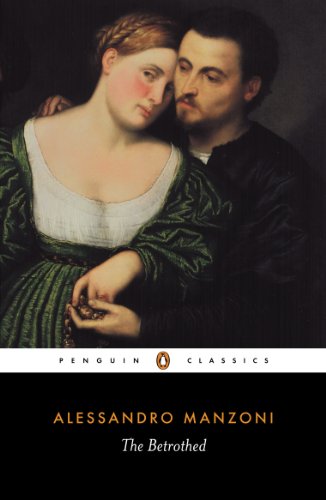 These words were written by Luigi Einaudi (1874–1961), recommending The Betrothed, the 1827 novel by Alessandro Manzoni (1785–1873), to the massive ranks of Italian public officers. Einaudi was both a scholar and journalist, who later became the first president of the fledgling Italian Republic in 1948. Well before then, Einaudi was the country’s most prestigious economist. Why was he recommending a novel to “Ministri, direttori generali, commissari, prefetti,” rather than a proper treatise in economics?
These words were written by Luigi Einaudi (1874–1961), recommending The Betrothed, the 1827 novel by Alessandro Manzoni (1785–1873), to the massive ranks of Italian public officers. Einaudi was both a scholar and journalist, who later became the first president of the fledgling Italian Republic in 1948. Well before then, Einaudi was the country’s most prestigious economist. Why was he recommending a novel to “Ministri, direttori generali, commissari, prefetti,” rather than a proper treatise in economics?
Manzoni’s book is indeed the story of two betrothed people, whose hope to get married is hampered by a local nobleman, and who eventually overcome the obstacles he puts in their way, by and large by chance—or thanks to Providence. The two main characters show a kind affection, largely free of sensual passion, and the novel’s key themes seem to be redemption and humility. Now, what about economics?
Manzoni wrote what is perhaps the highest example of the historical novel. He uses the story of two common types, to paint a larger fresco of History with a capital H, which he sees as the complex of social phenomena affecting the many, rather than the adventures of a few “great men.” Economics here comes in handy; it inspired, in particular, the twelfth chapter of the novel, which Einaudi recognized as a masterpiece in making vivid concepts dear to classical economists.
Novels are not lectures and they should not be read as such. But stories can transform things as dreary as social and economic ideas can sometimes be, into narratives that talk to people by evoking situations that resonate in their own lives.
In this regard, where an author comes from intellectually is not a mere detail. The struggle between liberty and power, the need for restraint in government, a strong revulsion for the powerful and mighty, an affinity to free market economics, and a sympathy for the “small people” who must earn their living through work are important features of Manzoni’s work. He wrote poems, tragedies, essays, innovating literary genres profoundly. In the following pages, I will, however, be concerned mainly with The Betrothed, trying to highlight to what extent the novel can be considered as having a classical liberal message. Such a message is consistent with the author’s mindset.
Alessandro Manzoni: A Brief Sketch of His Life and Times
One of Manzoni’s most important achievements was to provide Italians with a common language. Even at the time of Italy’s unification in 1861, only some two hundred thousand Italians out of a population of 25 million spoke Italian in a meaningful sense. In their daily undertakings, people used regional dialects often barely intelligible by “Italians” in other parts of the kingdom. However, the literati had learned their Italian from Manzoni’s novel The Betrothed, and then made it the language in which newspaper articles were written and radio news was spoken. You can hardly think of any other writer who accomplished such a triumph. This triumph, however, may overshadow other accomplishments, his thoughts, and his personality.
The scion of a great family of the Italian enlightenment—his grandfather was the legal scholar Cesare Beccaria (1738-1794), his natural father was most likely Giovanni Verri (1745-1818), the younger brother of publicist Pietro Verri (1728–1797)—Manzoni matured his worldview as a young man in the liberal intellectual circles of Paris. He joined his mother Giulia Beccaria (1762–1841) there, at age 20. They both spent time in the salon of Sophie de Condorcet (1764-1823), where he entered into contact with the Idéologues. Their intellectual leader was Destutt de Tracy (1754–1836), who had strong liberal principles and whose daughter Manzoni was at a certain point supposed to marry (Tellini 2007, 21).[1] Young Alessandro developed a profound friendship with historian and linguist Claude Fauriel (1772-1844), who later translated Manzoni’s work into French.
Upon marrying his first wife, Enrichetta Blondel (1791–1833), Manzoni returned to the bosom of the Catholic Church, but his Christian fervor did not displace his liberalism. His friend Ruggero Bonghi (1826–1895) once reported that “I have heard him say once ‘The time shall come when we must allow the Mormons to preach in the Cathedral’s square!’” (Bonghi [1927], 76). Manzoni’s adherence to Catholicism was profound and underlay his own understanding of the fallibility and limitations of each human. It never made him a supporter of the Pope’s temporal power. That was clear from the premise of his essay Osservazioni sulla morale cattolica (1819), written in response to Jean Charles Léonard Simonde de Sismondi (1773–1842) who “attributed the moral corruption of the Italians to the papacy” (Wood 2013, 119). Manzoni said he was persuaded that “a man can occasionally have the duty of speaking for truth, but never that of enforcing it” (1819, 9). Truth called for speakers, not for “enforcers.” After his conversion, his intellectual sparring partner was Antonio Rosmini (1797–1855), a Catholic philosopher who likewise appreciated the tradition of liberalism, particularly in economics (see, inter alia, Rosmini 1848).
Although Manzoni wrote only one novel, his literary production was substantial. Besides The Betrothed, Manzoni left a vast and complex literary legacy, ranging from poetry to history. His writings can be roughly divided into three different periods: from 1801 to 1809, he wrote mainly poetry. We can date his best known works, which can be broadly included in Romanticism, from 1810 to 1827. They include five religious poems, two historical tragedies, Il conte di Carmagnola (1820) and the Adelchi (1822); an ode on the death of Napoleon, Il cinque maggio (1821); the historical essay Discorso sopra alcuni punti della storia longobardica in Italia [Discourse on Some Points in Longobard History in Italy] (1822), the manifesto-letter to Cesare d’Azeglio (1763–1830) on Romanticism (1823), and, indeed, the first edition of I promessi sposi [The Betrothed] (1827). Thereafter, in the third period, up to his death, Manzoni concentrated on revising his novel and on linguistic, historical, and philosophical essays, including a late book on the French Revolution and an investigation of the historical novel that rejected it as a genre, one that he had started right after publishing his own historical great novel.
Manzoni was soon internationally recognized as one of the most powerful intellects of his time. The Betrothed was soon translated into English, although the first translation had “many faults,” at least according to Edgar Allan Poe (1809-1849), who reviewed the book (Poe 1835). More translations followed, including two well-curated ones, in 1951 by Archibald Colquhoun (1912-1964) and in 1972 by Bruce Penman.[2]
Manzoni’s liberalism included a profound understanding of economics. He was well acquainted with authors such as Jean-Baptiste Say (1767-1832) and Adam Smith (1723-1790) and left numerous notes on the economic treatises and essays he was reading. His understanding of economics came to surface in his grand historical novel, particularly in Chapter 12, where he deals with the famine in Lombardy. But his economic notions, and particularly his support for free trade, fit into his own vision of human nature—which is a troubled one. For Manzoni, human beings are wicked, imperfect, fallible, prone to mistakes and delusions—and yet capable of good. Such good is most likely to come from humble sources than from the action of the powerful and great. Indeed, his work seems to confirm that “great men are almost always bad men” (Acton 1887).
Commentators have often highlighted the influence on Manzoni of Augustin Thierry, whose “closest friend” (Gossman 1976, 5) was Manzoni’s friend Fauriel. A renowned French historian but also a “noted political liberal, and an energetic and combative polemicist in the liberal cause” (Gossman 1976, 4), Thierry is considered one of the founding fathers of the classical liberal analysis of class conflict (Raico 1988).[3] He “undertook voluminous researches and publications of the growth of commerce and industry, the emergence of the middle class, and the charters and oath-associations from the eleventh century whereby the legal and constitutional rights of the middle class were protected” (Liggio 1990).
For Thierry, the barbarian conquest shaped European societies, thanks to a confrontation “between the Roman and German manners” (1859, 27). With the Germans prevailing, “all the public powers transformed into demesnial privileges, the idea of nobility devoted to the profession of arms, and that of ignobility to industry and labour.” If the “liberty of the noble ... was entirely a matter of privilege, derived from conquest and German usages,” “the idea of another kind of liberty, conformable to natural right, within the reach of all, equal to all, to which may be applied, after its origin, the name of Roman freedom” (Thierry 1859, 33) survived in fortified towns. Cities were thus the cradle of the enterprising bourgeoisie, who aimed to achieve prosperity by trade. Political power appears thus to be established upon conquest, whereas “the seeds of civilizations” were guarded by “serfs” and “bourgeois” whom “the conquerors devoured at their mercy” (Thierry 1835, xi).
Thierry blamed historians for “having created the history of France upon the sole history of the conquering Franks” (Smithson 1972, 84): upon great conquerors and military men, and not on the workings of traders, workers and “ordinary” people. This message resonated profoundly with Manzoni, who adapted it to his own circumstances. In his Discorso sopra alcuni punti della storia longobardica in Italia (1822), he notes that the barbarian conquests determined the “formation and permanence of these much different and, most importantly, unequal, societies,” the conquered and the conquerors. But “the chroniclers of the Middle Ages mainly report the major or outstanding events and only tell us the story of the conquering people, and in some instances limit themselves to the kings and the foremost characters of that people” (Manzoni 1822, 187, 188).
Manzoni knew Thierry personally and, like the French, in the early 1820s began to read the “great collections of the Historiens originaux de la France et des Gaules” (Thierry 1835, xx). In those “unorganised collections, which were not only intended to the exclusive description of great events and personages,” Manzoni “would start focusing his interest on the world of the humblest people” (De Lollis 1926, 49).
In Manzoni’s novel, the main characters are humble people indeed, a couple of farmers: at the end of the novel Renzo, finally married to his Lucia, will purchase and manage a small silk mill. This seems to be in accord with the shift in public opinion toward an appreciation of commercial jobs that McCloskey (2016, 2019) has extensively written about.[4] Yet that was not an uncontroversial choice in Manzoni’s times. His friend Nicolò Tommaseo (1802-1874), in a review of the book, commented that “a hillbilly can certainly be worthy of no less esteem than a king: but I wonder whether he deserves to be the subject of a novel” (1827, 104).
The Betrothed, in Short
Manzoni’s aim, with The Betrothed, was “to tell an invented story of two young peasants while at the same time evoking seventeenth-century Lombardy, in which the story was set, with all the historical accuracy he could muster” (Bermann 1984, 28).
The Betrothed is set in 1628, when Milan and the surrounding country were under Spanish domination. The duchy of Milan was part of the Spanish kingdom, since Philip II had succeeded Charles V. Foreign rulers are not viewed with great sympathy, and the ideal of Italian independence was dear to Manzoni, during whose times the Austrians controlled Milan (they inherited the city after the war of Spanish succession). Yet Manzoni was frank in depicting Italians as imperfect human beings, not necessarily better than their foreign masters. Imperfection is a feature of the human condition, not of nationality.
The novel, which purports to be based on an old and faded manuscript, begins in a little hamlet in Lecco, on Lake Como. At first sight, the betrothed who long to get married are not only utterly un-aristocratic and un-exceptional, but also a very unlikely pair of characters for a romantic novel: Renzo Tramaglino is a silk-weaver, his promised Lucia Mondella a peasant.
They are good folks, common people with simple desires. They just want, indeed, to get married and set their household up. But Don Rodrigo, a local nobleman, fancies Lucia too, after a casual and fleeting encounter on a country road. Don Rodrigo, the first nobleman we meet in the novel, is a local boss, a minor Vito Corleone. His henchmen convince Don Abbondio, the cowardly parish priest who was to marry the couple, that the wedding shouldn’t take place, questo matrimonio non s’ha da fare, which is but one of the very many sentences from the Betrothed that even Italians who never open a book commonly quote.
Renzo and Lucia resort to Friar Cristoforo for help and guidance. The good friar was himself an aristocrat, and an arrogant man before undertaking a life of atonement. Friar Cristoforo confronts Don Rodrigo, hoping to convince him to let Lucia go—but to no avail. He cannot win him back to piety and Christian sentiments. Renzo and Lucia are then separated and will reunite only at the end of the story.
Renzo faces a perilous journey in a plague-infested Milan. He then repairs near Bergamo, a few miles from Milan but back then under another sovereign power: Bergamo is part of the free Republic of Venice, not of the Spanish kingdom, as Milan was. He will become sick with the plague but recover.
Lucia is entrusted to a convent of nuns, where she is betrayed by Gertrude, a nun with a checkered past who is one of Manzoni’s most tragic (and profound) characters. Gertrude has very little, if any, vocation, but became a nun because her father, a “nobleman in Milan, who could count himself among the richest men in the city” wanted desperately to keep his estate intact thereby passing it on to his first son. Such attachment to primogeniture came out of “the high opinion he had of his title,” which made him regard his own resources as merely sufficient for keeping up with it. The description of Gertrude’s father is a masterpiece of Manzoni’s, an investigation of “so strange and confused a piece of work is the human heart” (1827, 207): the man shows himself selfish, mean, but at times reflects “a happy cordiality and a tenderness which were in fact largely sincere” when his daughter set out on her unhappy course.
Evicted from the convent, Lucia is at the mercy of l’Innominato (the Unnamed), a more powerful and gangsterish territorial lord than Don Rodrigo, who sought the Unnamed’s help to persecute his hapless victims. Apparently a helpless captive, Lucia will end up as the crucial figure who will lead to the Unnamed’s conversion, making him doubt his conduct and wishing for change. He will be ultimately won back to the side of good by Federico Borromeo (1564-1631), then bishop of Milan, a historical figure who was the cousin of St. Charles Borromeo. The novel ends with Renzo and Lucia happily reunited, married by a Don Abbondio (a personification of fear, yet, as all the others, a truly human character, who sometimes even utters some common sense), and moving out of the village as Renzo becomes a small businessman, the owner of a spinning mill near Bergamo.
The Column of Infamy and the Search for Visible Hands
As an appendix to an updated edition of the book, in 1840, Manzoni eventually published a little essay he wrote in 1829. Storia della colonna infame (The Column of Infamy). This is a historical essay that places the novel in context and clarifies its author’s interest in the issue of the plague in Milan as a social phenomenon.
The Column of Infamy is an investigation into the proceedings of a 1630 historical inquiry. The accused were considered guilty of spreading the plague by smearing people and objects with a venomous ointment (untori). Of course this was not what happened, but the people of Milan could not accept that the plague which struck them was the outcome of many, contemporary causes.
Among such causes, a prominent one was the War of the Mantuan Succession, which during the Thirty Years War brought foreign troops on Italian soil. But could it be the case that such an evil sickness simply traveled with unwitting soldiers?
A different conjecture was taking root among the citizens of Milan: that the plague was a contrivance by evil people, who had their own nefarious ends.
One morning in June, 1630, a woman standing at a window in Milan saw a man she happened to think might be an “untore,” deliberately infecting people with the plague. She made her suspicion public, so that the man was arrested. He happened to be Guglielmo Piazza, a Commissioner of the Tribunal of Health. In ordinary times, the alibi that he produced would have guaranteed him immediate acquittal.
But such were the times, and such the thirst for names to blame, that things took a very different turn. Piazza was then tortured, and after horrible sufferings was induced to make a false confession. In so doing he implicated an innocent barber, Giangiacomo Mora, who allegedly had given him the infected ointment and driven him to spread it on the city’s houses. Mora, the barber, was then arrested and tortured and likewise induced to make a confession. The “evidence” provided by one clashed with the one provided by the other, but this didn’t matter much.
Both Piazza and Mora were promised immunity in exchange for their confessions, yet they were both sentenced to death. They were placed on a cart in full view of the crowd, their right hands were struck off as they passed Mora’s shop; they were tied alive to the wheel and, after six hours of further torment, were put to death. Mora’s house was demolished “never to be rebuilt” and in its place a pillar, called the “Column of Infamy,” hence the title of Manzoni’s work, was erected on the spot, where it stood till 1778.
Both the essay and Manzoni’s novel make a crucial point: we are often incapable of understanding, let alone accepting, phenomena without tracing them back to clearly identified responsible or guilty people, heroes or villains. We want visible hands.
In this sense, The Betrothed is a critique of what F.A. Hayek (1899-1992) would describe as the “ingrained propensity of our thinking to interpret everything anthropomorphically” (1966, 87). To clarify this concept, Matt Ridley pointed out that “the history of Western thought is dominated by skyhooks, by devices for explaining the world as the outcome of design and planning” (2015, 7). We humans have difficulties in understanding that some social phenomena have no single cause, nor a single author. But, particularly when we see them as bad or dangerous, we can’t but rush to find somebody to blame. Unhappy with invisible hands, we search for visible ones. This mindset easily nurtures conspiracy theory, and “passionate natures are all too ready to accept the passionate assertions of a crowd” (Manzoni 1827, 259).
Manzoni knows well this is an attitude ingrained in our own nature, which can’t be simply cured with education, as Enlightenment thinkers liked to think. The proceedings that he narrates in The Column of Infamy were uncovered by Enlightenment publicist Pietro Verri in his Observations upon Torture, a work contemporary with the more celebrated De’ delitti e delle pene [On Crimes and Punishments] by Manzoni’s grandfather, Cesare Beccaria. Manzoni read and absorbed the information from Verri’s work, but he was nonetheless dissatisfied with it.
Verri considered what happened to Piazza and Mora the result of widespread ignorance and the barbarous institution of torture. Manzoni thought that “from a great evil senselessly occasioned by men to their fellows, more general observations may be drawn,” as “ignorance in natural philosophy may produce inconvenience, but not iniquity; and a bad institution does not enforce itself.” The problem lay, Manzoni wrote, in “depraved passions,” which inform wicked acts and are dreadfully dangerous when they animate powerful men.
These “depraved passions” do not necessarily need evil institutions, nor sheer ignorance, to become dangerous. “Man,” Manzoni reasons, “can always deceive himself, and terribly deceive himself”. Indeed “fear and fury can equally well be provoked by evils that may really be, and sometime are, an effect of human depravity” but yet “fear and fury, when not controlled by reason and charity, are unhappily liable, on the flimsiest pretexts and following the wildest assertions, to presume the guilt of men who are simply unfortunate” (Manzoni 1840, 564). Sometimes people rightly react with outrage to mischief that originates in human malice. But sometimes they claim incorrectly that unhappy events are the outcome of human malice. In his novel, Manzoni shows that such a way of thinking is more often than not the result not of men ruminating in isolation, but by men getting together as a mob. He does not claim that “personality vanishes” and “a collective mind is formed” once people join a crowd (LeBon 1895, 12). Yet the lust for skyhooks reinforces itself when men join each other as a powerful glue for the newly formed mob.
In one of the most famous chapters in The Betrothed, poor Renzo, dispatched to Milan to avoid running into Don Rodrigo as he looks for his fiancé, Lucia, ends up in a mob which is revolting against bakers supposedly hoarding flour and bread. The mob uprising was a historical fact, the “tumulto di San Martino,” which occurred on November 11th and 12th, 1628.
The mob is prone to follow people with a violent nature, whose passionate search for “visible hands” and evil mischief has turned them into self-appointed commissioners of the people: “In popular uprisings there are always a certain number of men, inspired by hot-blooded passions, fanatical convictions, evil designs, or a devilish love of disorder for its own sake, who do everything they can to make things take the worst possible turn” (Manzoni 1827, 264).
Certainly there are others who,“inspired by friendship or fellow-feeling for the people threatened by the mob, or by a reverent and spontaneous horror of bloodshed” pushed “the bulk of the mob ... its raw material ... makeup of a fortuitous conglomeration of human beings” in the opposite direction.
Manzoni does not embrace the Enlightenment view that the problem lies exclusively with popular credulity, together with the widespread ignorance of the populace. There is something deeper, in human hearts, which makes credulity and false information (“fake news”) all the more dangerous. A taste for simplification and the endless search for a culprit can easily be exploited by fanatics and power-hungry men alike. Even his hero, Renzo, is carried away in the frenzy, although he never resorts to the extreme step of killing the city commissioner charged with regulating the provision of supplies, whom the mob considers responsible for their hardship as he “defends the bakers.” Manzoni knows of the role of those men who try to carry the many in an evil direction, but considers that the very size of the mob makes of individual men the “raw material of the mob.”
Manzoni has been seen, namely by Antonio Gramsci (1891-1937), as being patronizing toward the poor, but Manzoni does not show Renzo to be a worse human being than the dignitaries who at the beginning refused to acknowledge the existence of the pestilence, then moved to consider it “not a true pestilence,” and eventually recognized it to be “a pestilence without any doubt ... but now a new idea was attached to it, the idea of poisoning and witchcraft” (1827, 650). The erudite and well-off Don Ferrante, a bookish intellectual who took alchemy and witchcraft seriously, dies because he assumes the plague does not exist.
Human beings are capable of extraordinary things, like the Capuchin friars that provide shelter and aid against the plague, or the many people who end up helping Renzo and Lucia in their adventures, including a converted criminal such as the Unnamed. Yet humans are prone to biases, they tend to look for visible hands and culprits to explain bad things happening to them, they may abuse power to please the crowd. On the canvas of history, Manzoni paints a highly realistic portrait of humanity.
Manzoni the Economist
Manzoni’s understanding of humanity informs his understanding of economics. In her Bourgeois Equality, echoing Luigi Einaudi, Deirdre McCloskey writes that the twelfth chapter of The Betrothed is something that an economist “could reprint ... for a lecture in Economics 101” (2016, 591).
The chapter sets the stage for the mob uprising that we have already mentioned. It opens with a description of the “second year of bad harvest” which produced a scarcity of wheat and, therefore, bread. The shortage was a by-product of the War of the Mantuan Succession. First, “the damage and waste caused by the war” were such that land close to the battlefields “remained uncultivated, having been deserted by peasants who were compelled to go out and beg their bread instead of growing it by the sweat of the brow for themselves and for their fellow men.” This added to other, less visible, consequences of the war: “the unbearable level of taxation, levied with incredible greed and incredibile folly; the ... behaviour of the troops quartered in the villages” (Manzoni 1927, 240).
With the miserable harvest came a shortage and, “With the shortage came its painful, salutary, inevitable consequence, a rise in price.”
Be careful not to miss the word “salutary.”[5] For “salutary,” Manzoni meant that higher prices would draw grain from foreign countries, as the lure of profit would outweigh the trouble of transport and storage. A price rise would stir up the incentives for local producers to endeavour to grow more grain. The dynamic effects of a price rise are felt on the supply side, increasing production so that a given good can later become less scarce again, and the price thus decline.
For this healthy adjustment process to develop, the price should be allowed to rise. But an abrupt increase in price produces
a common conviction that it is not in fact the shortage of goods that has caused the high prices. People forget that they have feared and predicted the shortage, and suddenly begin to believe that there is really plenty of grain, and that the trouble is that it is being kept off the market. ... The storehouses and granaries were known to be full, overflowing, bursting with grain. (Manzoni 1827, 241)
Manzoni’s insights into mass psychology allow him to see how it is the popular mood—their instinctive association of higher prices and profiteers—that jeopardizes the price system.
Indeed, this widespread belief supports “certain official measures which the multitude always regards (or always has regarded up to the present day), as fair, simple and ideally calculated to bring out the grain that has been secreted” (Manzoni 1827, 241). This is how price controls are put in place and yet “all the official measures in the world, however vigorous they may be, cannot lessen man’s need for food, nor produce crops out of season.” These measures have unintended consequences: they were “certainly not calculated to attract imports from other areas where there might conceivably be a surplus. And so the trouble continued and grew worse” (Manzoni 1827, 242).
Crucially, Manzoni doesn’t believe that an unruly mob is the only party which does not grasp what price rises are good for. The government is in thrall of the same delusion. The two face different incentives. The mob is just hungry and needy. The “ingrained propensity of our thinking to interpret everything anthropomorphically,” to search for visible hands, is made all the more cogent by this state of need. Officials should perhaps know better, but in actual fact they share the same, basic assumption with the mob: they believe they can save the day at the stroke of a pen.
Indeed, the Spanish authorities fixed the price at a level that would have been “right” with much cheaper grain. To Manzoni, Grand Chancellor Antonio Ferrer, the price fixer, “was behaving like a lady of a certain age, who thinks she can regain her youth by altering the date on her birth certificate” (Manzoni 1827, 242).
There is—if not a slippery slope—certainly a vicious circle caused by allegedly benevolent interventionism. Manzoni understood well that, if setting a cheap price doesn’t make bread magically appear on people’s table, these delusional measures nonetheless consolidate the popular belief in an almighty government. This way, intervention breeds intervention – with much conceit and little benefit.
On 15 November Antonio Ferrer published a proclamation ... according to which no one who had grain or flour in his house was allowed to buy any more ... there was also a fresh order that the shops must be kept well supplied with bread ... Anyone who can suppose that such a proclamation could be carried out must have enviable powers of the imagination. (Manzoni 1827, 564-565)
In a sense, Manzoni wrote a wonderful parable on unintended consequences. Consider the following passages, in which the perverse effects of government meddling unfold. If the public authorities
were going to command the bakers to produce all that bread, they had to take steps to see that the raw materials were available. In times of shortage the authorities always busy themselves with methods of making bread out of foodstuffs which are normally eaten in other forms; and so in this instance it had been decided to start using rice as an ingredient in the so-called ‘mixed loaf’. ... there was a proclamation that reserved, for the disposal of the commissioner and tribunal of provisions, one half of whatever quantity of unpolished rice ... that each individual might have in his possession, with penalties for anyone disposing of the same without the permission of the said authorities of confiscation of the goods in question and a fine of three scudi for measure. ... But rice had to be paid for, at a price out of all proportion to the price of bread. ... And the governor published another proclamation ... fixing the price of the afore-mentioned rice. ... Anyone who asked a higher price, or refused to sell, was to lose the goods in question ... and suffer greater financial penalties and corporate penalties up to service in the galleys. (Manzoni 1827, 565, 566)
The “salutary” rise in price would have brought in grains from other parts of Europe to Milan. But “Since the prices of bread and flour were kept so low in Milan, the natural consequence was that processions of people from the country came into town to buy those goods.” How was the problem solved? But by prohibiting people to take bread outside the city.
Manzoni notes: “The mob had thought it could create times of plenty by looting and incendiarism; the government thought it could prolong them by the threat of the lash and the galley” (1827, 567). These measures led to a vicious cycle of interventionism.
[T]here is in fact a necessary connection between all those strange provisions. Each was an inevitable consequence of the one before, and all followed logically from the first, which fixed a price for bread which was so far removed from the real price—by which we mean that which would have resulted from the relationship of supply and demand (Manzoni 1827, 567).
Manzoni’s understanding of economics was sophisticated, as economist Augusto Graziani (1865-1944) recognized (1878). Manzoni was an avid reader, who wrote a number of marginal notes on what he read in economics. Like his friend Rosmini (Mingardi 2018), he criticized Melchiorre Gioia (1767-1829) extensively. In his notes, he repeatedly found fault with the Utilitarian and materialistic Gioia, particularly for what Manzoni saw as his lack of understanding of classical economics. Manzoni was familiar with the works of J. B. Say (1767-1832) and of Adam Smith (1723-1790). He sympathized with these ideas and maintained that “Smith ascribed—to the division of labour neither more nor less of what was proper” (1885, 131).
He was a free trader—arguing that free trade was the means to mitigate famine, with an argument similar to the one he made about the “salutary” rise in price in The Betrothed: “Abundance, or scarcity, is never general everywhere,” and it may differ country to country. This “kind of inequality” justifies “the opinion in favor of freedom, which is the general means of getting wheat from the places where it overflows ... to the places where it is lacking” (Manzoni 1885, 217). He thought that either legislators were wise enough to allow goods to flow “with the favour of the law, with flying colours, in the light of the sun”—or “goods shall enter in spite of the law, under the guise of smuggling, under the shine of the moon.” He found it puzzling that people in government didn’t grasp that point “fifty years after Smith’s death, and several after Say’s passing, and with Cobden and Bastiat alive and still active” (Manzoni 1848, 457).
Conclusions
Admirers of Manzoni included some of the great learned of his age. Just consider that Goethe (1749-1832) thought that in The Betrothed “Manzoni’s internal culture appears so high, that scarcely anything can approach it. It satisfies us like perfectly ripe fruit” (Eckermann 1836, 270-271). The work is a monument to the power of fiction, a potent story of the lives of two ordinary people, and any essay that focuses only on its politics and economics is bound to do no justice to the genius of its author.
Yet its politics and economics are notable, particularly for a tradition of thought, namely classical liberalism, which appears often arid and distant from the powerful work of the imagination.
Can novels teach what pamphlets cannot? When, in 1923, The Betrothed was placed in the Italian high school curriculum, Luigi Einaudi had great hopes: “whoever can infuse in our youth the spirit of the economic chapter of Alessandro Manzoni’s The Bethroted would fully achieve the civil and spiritual end” of the teaching of economics. “To succeed in making those immortal pages to be thoroughly appreciated would mean to have deeply penetrated the spirit of science and to partake of a true economic sense of history and of life ... a renewed economic teaching would play a not inconsiderable part in the mental development of Italy’s new generations” (Einaudi 1923).
That did not work: Italians did not grow particularly knowledgeable about political economy, at least as far as their voting patterns can tell us. Attempts to politically control prices, in particular, are no less frequent in Italy than in other countries. Just consider that at the end of 2019 the Italian Parliament passed a law regulating the prices of books, and that requests for substantial intervention rose when, with the spread of COVID19 coronavirus, the price of protective masks skyrocketed.
Whatever the effect reading Manzoni produced in Italy, his work is highly valuable for those who care about liberty. On one hand, Manzoni—building on the lesson of Thierry—explicitly wanted to write about common people, to put them for once on the center stage of history. His novel is by design a critique of the mighty and their pretensions. On the other hand, Manzoni does not idealize thecommon folk: he describes them with their biases, with their prejudices, with their need for visible hands and skyhooks.
In this sense, the novel is a great lesson in humility. Humility in attempts to intervene in the economy and manage prices, even during plague and famine. Humility in our pretenses to understand social phenomena, and govern them, without considering how weak and biased our own understanding is. Humility in thinking the lives and stories of some are more interesting and meaningful than the apparently dull lives of ordinary folks.
Deirdre McCloskey has summed up the promises of liberalism in the 1800s as “a new if imperfect equality before the law and a new if imperfect equality of dignity in society” (McCloskey 2019, 131). Manzoni wrote a novel that epitomized such imperfect equality but also wondered about the mechanisms by which common people themselves were to push against that essential part of a free society, namely, a free economy. In the space of a novel, by looking into “so strange and confused a piece of work” as “the human heart,” he also allowed us to see the merits and dangers of “so strange and confused a piece of work,” the free society.
References
Acton, John Emerich Edward Dalberg (Lord Acton). 1887. Letter to Archbishop Mandell Creighton, April 5, 1887, Acton-Creighton Correspondence.
Bermann, Susan. 1984. “Introduction” to Alessandro Manzoni, On the Historical Novel, translated by Sandra Bermann, Lincoln, Nebr.: University of Nebraska Press.
Bonghi, Ruggero. [1927]. Scritti manzoniani, edited by Giuseppe Lesca, Città di Castello: Società anonima editrice Francesco Perrella.
Collodi, Carlo (Carlo Lorenzini). 1881. Pinocchio: The Story of a Puppet. Philadelphia: J.P. Lippincott Company, 1914.
De Lollis, Cesare. 1926. Alessandro Manzoni e gli storici liberali francesi della Restaurazione. Bari: Laterza.
Eckermsann, Johann Peter. 1836. Conversations of Goethe with Eckermann and Soret, translated by John Oxenford. London: Bell and Sons, 1875.
Einaudi, Luigi, 1919. La lotta contro il caro viveri. Now in Cronache economiche e politiche di un trentennio (1893-1925). Vol. V, Torino: Einaudi, 1961.
Einaudi, Luigi. 1923. L’economia politica nei licei. Corriere della sera, November 17.
Gensini, Stefano. 1995. The ‘Imperfect’ Language. Note on Alessandro Manzoni’s linguistic ideas. In Lisa Formigari and Daniele Gambarara (eds), Historical Roots of Linguistic Theories. Amsterdam: John Benjamins.
Gossman, Lionel. 1976. Augustin Thierry and Liberal Historiography. Middletown, Conn.: Wesleyan University Press.
Graziani, Augusto. 1878. Le idee economiche del Manzoni e del Rosmini. In Teorie e fatti economiche. Milano-Roma: Fratelli Bocca Editori, 1912.
Hayek, F.A. 1966. Dr. Bernard De Mandeville (1670-1733). In The Trend of Economic Thinking. Essays on Political Economists and Economic History. London: Routledge, 1991.
LeBon, Gustave. 1895. The Crowd: A Study of the Popular Mind. Kitchener: Batoche Books, 2001.
Liggio, Leonard P. 1990. The Hispanic Tradition of Liberty: The Road Not Taken in Latin America.
Manzoni, Alessandro. 1819. Osservazioni sulla morale cattolica. Vicenza: Banca Antoniana, 1992.
Manzoni, Alessandro. 1822. Adelchi tragedia di Alessandro Manzoni con un discorso sur alcuni punti della storia longobardica in Italia, Milano: Vincenzo Ferrario.
Manzoni, Alessandro. 1823 (unpublished). Fermo e Lucia, edited by Salvatore Silvano Nigro. Milano: Mondadori, 2015.
Manzoni, Alessandro. 1827. The Betrothed, translated by Bruce Penman. London: Penguin Pocket Classics, 2016 (1972).
Manzoni, Alessandro. 1840. History of the Column of Infamy, translated by Fr Kenelm Foster. Now in The Betrothed and the History of the Column of Infamy. London: Dent,1997.
Manzoni, Alessandro. 1848. Letter to La concordia, September 13. In Tutte le lettere, edited by Cesare Arieti, II. Milano: Adelphi, 1986.
Manzoni, Alessandro. 1850. On the Historical Novel, translated, with an Introduction by Sandra Bermann. Lincoln: University of Nebraska Press, 1984.
Manzoni, Alessandro. 1885. Postille in Opere inedite o rare, edited by Ruggero Bonghi. Milano: Fratelli Rechiedei.
McCloskey, Deirdre N. 2016. Bourgeois Equality: How Ideas, Not Capital or Institutions, Enriched the World. Chicago: University of Chicago Press.
McCloskey, Deirdre N. 2019. Why Liberalism Works. New Haven: Yale University Press.
Mingardi, Alberto. 2018. Rosmini’s Liberalism and the Shadow of Adam Smith. Journal of Markets and Morality 21, no. 2.
Poe, Edgar Allan. 1835. Review of The Betrothed Lovers. Southern Literary Messenger 1, no. 9 (May).
Raico, Ralph. 1992. Classical Liberal Roots of the Marxist Doctrine of Classes. In Yuri Maltsev (ed), Requiem for Marx. Auburn, Ala.: Ludwig von Mises Institute.
Ridley, Matt. 2015. The Evolution of Everything. London: Fourth Estate.
Rosmini, Antonio. 1848. The Constitution Under Social Justice, translated by Alberto Mingardi. Latham, Md.: Lexington Books.
Smithson, Rulon Nephi. 1972. Augustin Thierry: Social and Political Consciousness in the Evolution of a Historical Method. Geneve: Librairie Droz.
Tellini, Guido. 2007. Manzoni. Roma: Salerno editrice.
Thierry, Augustin. 1835. Dix ans d’études historiques. Bruxelles: J.P. Meline.
Thierry, Augustin. 1859. The Formation and Progress of the Tiers État, or Third Estate in France, translated by Francis B. Wells. London: Henry G. Bohn.
Tommaseo, Niccolò. 1827 (signed K.X.Y.) I Promessi sposi. Storia milanese scoperta e rifatta da A. MANZONI. Milano, Ferrario, 1825-27. Antologia, no.82 (October): 101-119.
Wood, Ian. 2013. The Modern Origins of the Early Middle Ages. Oxford: Oxford University Press.
Notes
[2] In this article, I will use the Penman’s translation.
[3] In his autobiographical Dix ans d’études historiques, Thierry describes his idea of liberty: “any kind of government that would offer the greatest possible number of guarantees for the individual with the least possible amount of administrative action” (Thierry 1835, xvi).
[4] It was a sudden shift in opinion that made common people, and even their contrivances, worth writing about. Consider the opening words of Pinocchio: “There was once upon a time...— ‘A king!’ my little readers will instantly exclaim. No, children, you are wrong. There was once upon a time a piece of wood” (Collodi 1881, 11).
[5] In the first draft of the novel, Fermo e Lucia, Manzoni connects “a confused, albeit lively, notion of the gap between the need of food and the means to fulfill it, between wheat and hunger.” Manzoni reflects on how charity can temper need and desperation but points out that “besides the means to make that evil tolerable, manifold, alas, are those to aggravate it ... which can be subsumed under two main headings: the notions of the people, and the measures of the rulers” (1823, 501, 503).
| Other Independent Review articles by Alberto Mingardi | |
| Spring 2021 | Why Italy’s Season of Economic Liberalism Did Not Last |
| Winter 2020/21 | Locke among the Radicals: Liberty and Property in the Nineteenth Century |

